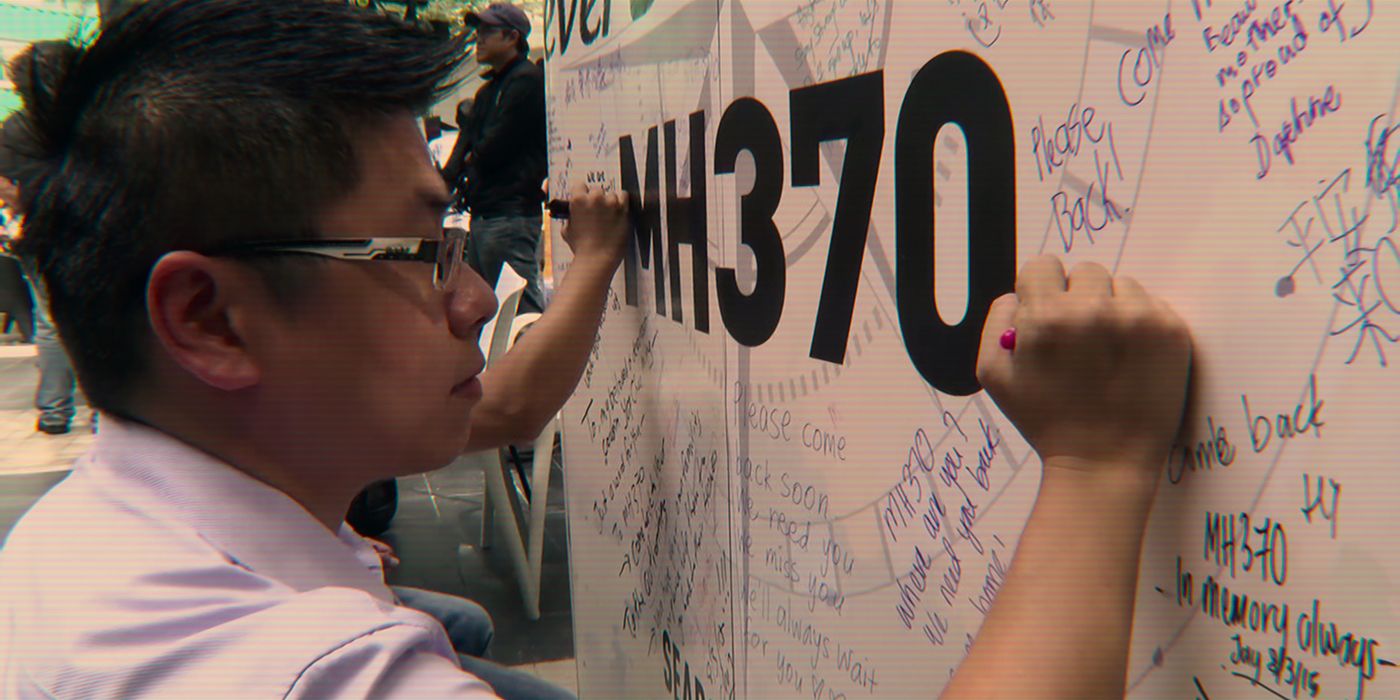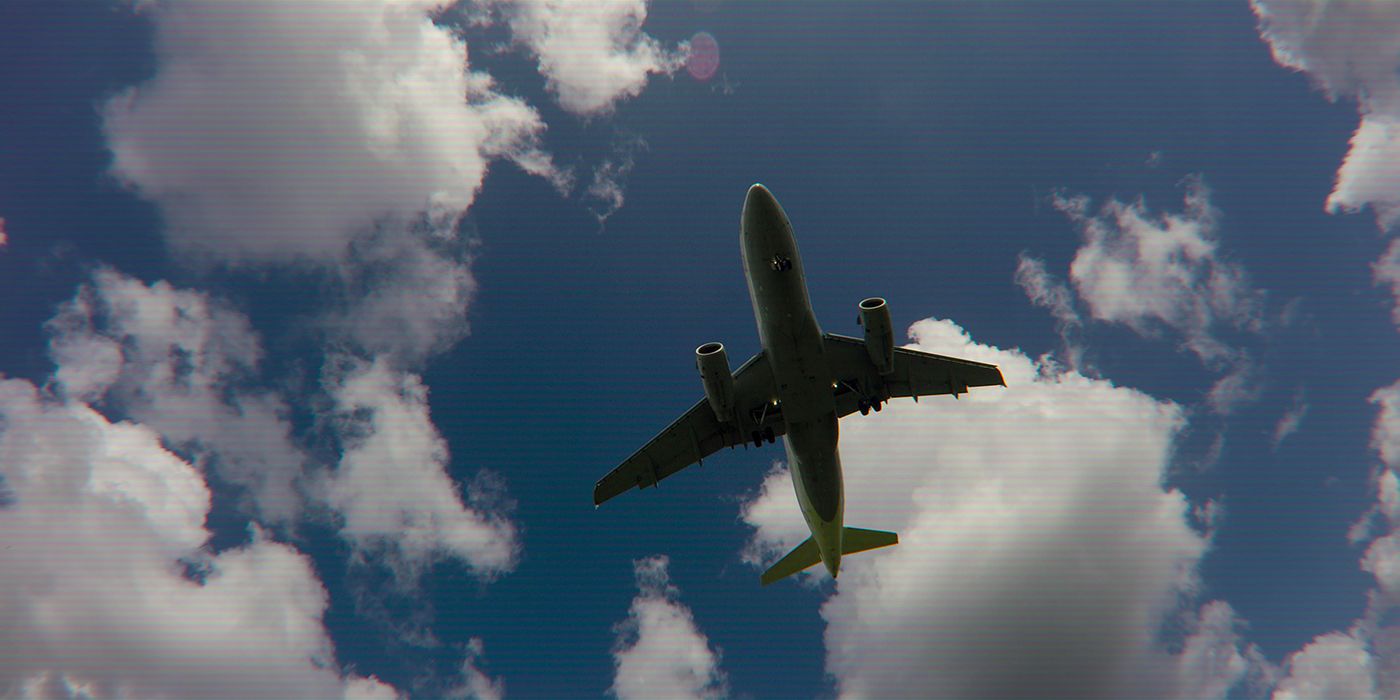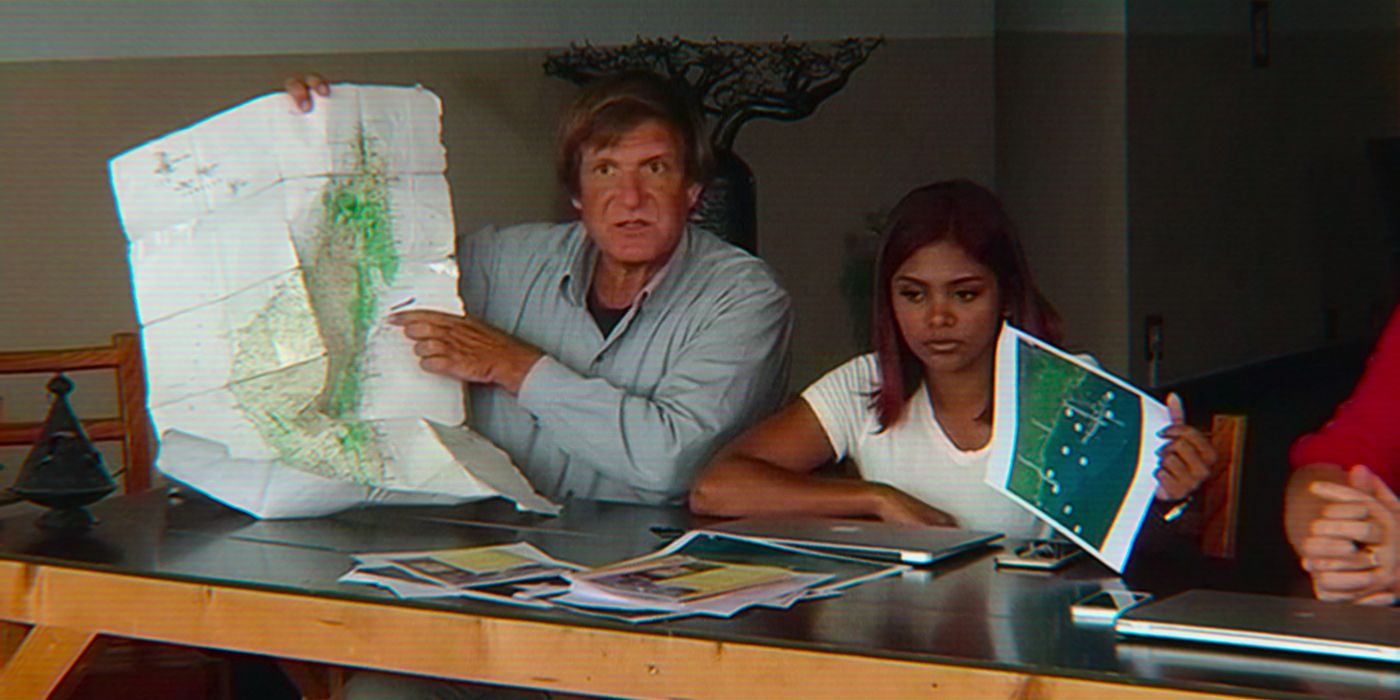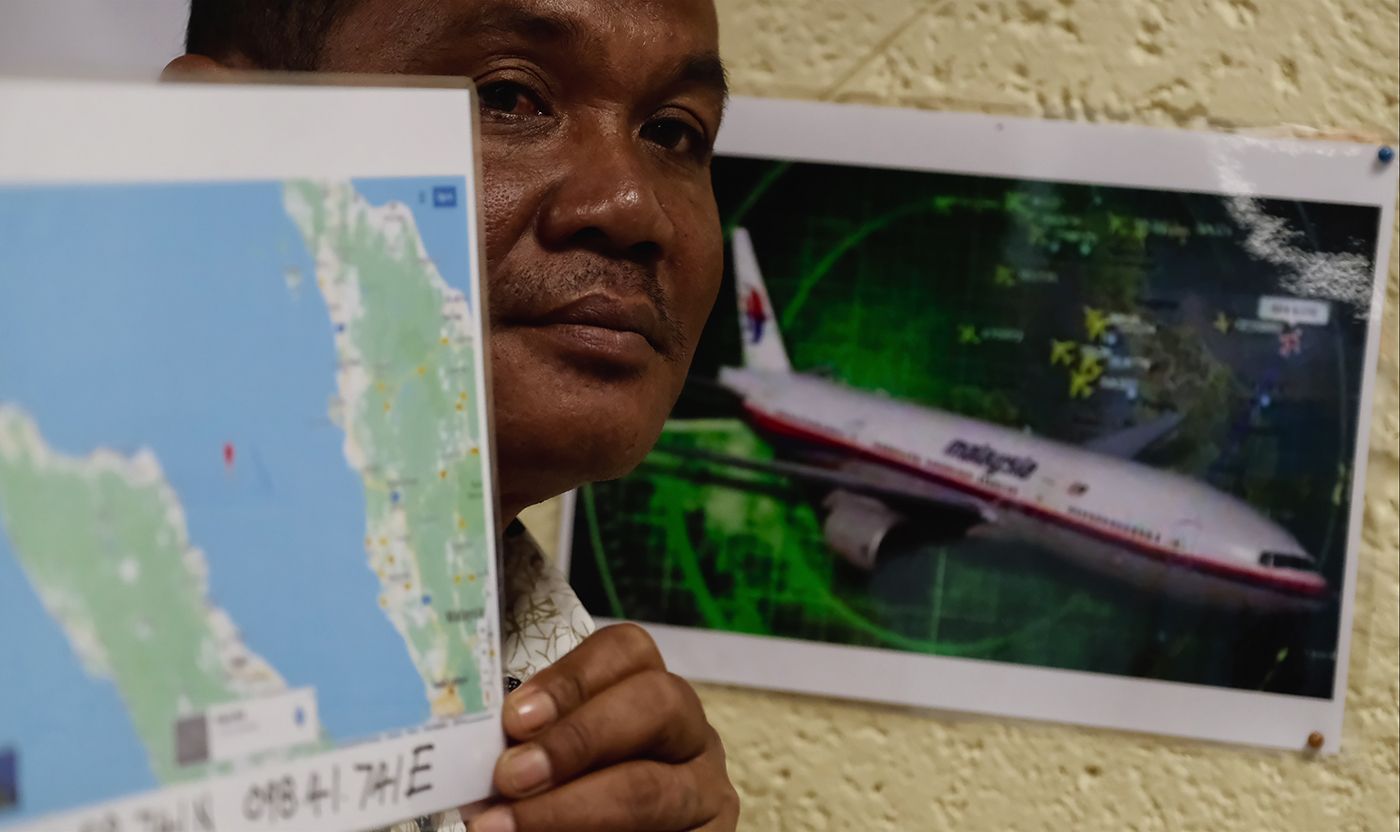"Planes go up, planes go down. What planes don't do is just vanish off the face of the Earth." Aviation journalist Jeff Wise, one of the key figures in the Netflix limited docuseries MH370: The Plane That Disappeared, sets up the chilling preamble to the examination of the baffling disappearance of Malaysian Airlines Flight 370 in the show's first episode. On March 8, 2014, the Boeing 777 carrying 239 passengers and crew simply vanished from radar on a routine red-eye flight from Kuala Lumpur to Beijing. Nine years later, the airliner remains missing and the cause of its disappearance has yet to be resolved. The documentary, produced by Harry Hewland, best known for the National Geographic Channel's Locked Up Abroad series, and directed by Louise Malkinson, attempts to piece together the mystery of the jetliner's disappearance through interviews with experts, journalists, amateur sleuths, and family members of the plane's missing passengers. The problem is that it's a documentary offering far too little in the form of actual documentation and far too much in the form of wild speculation, conspiracy theories, and ill-conceived sensationalism. Ultimately, it does a disheartening disservice to the documentary form, and more importantly, to the anguished loved ones of MH370's passengers who desperately seek closure.
A Compelling Mystery That Fails to Build on Facts
Making a compelling documentary feature is a formidable task, requiring a gripping subject, a solid purpose, and production techniques that draw viewers in and maintain their interest. But nothing is more important to a successful documentary than facts. According to Our Culture magazine, "by definition, a documentary film exists to document a truth. As such, unlike other genres, the documentary is limited by the boundaries of not only what is possible, but also what is real." Without a story grounded in factual information, a documentary ceases to be a documentary and enters the blurry world of "infotainment." While MH370 certainly has a riveting subject and purpose, and while its production values are slick and sophisticated, it fails in its ability to assemble any useful facts or evidence in a way which gets to the truth. Certainly, MH370 is chockablock with molecular pieces of data, statistical compilations, records, and dispatches. But Hewland and Malkinson fall short in being able to corral all of this clamor and commotion into a narrative that answers some of the biggest questions about this mystery or that draws any meaningful conclusions. Facts, unfortunately, frequently serve as a mere ceremonial backdrop for some of the more dubious and daft claims the series seems intent to promote.
A Series That Flies Into Unsubstantiated Territory
The show's first episode is promising, presenting a nearly minute-by-minute look at what happened from the time Flight 370 departed the Kuala Lumpur airport at 12:41 a.m., as it traveled out of Malaysian airspace and into Vietnam's, and until it vanished from radar over the South China Sea at 1:22 a.m. Air traffic control, cockpit voice recordings and radar screens displaying the aircraft's trajectory give a disturbing sense of realism to the chronology of events, as do interviews with individuals who recall their final phone calls and text messages with loved ones who boarded the plane that evening. Journalist Wise, who authored the non-fiction book, The Taking of MH370, is the series' de facto narrator, guiding viewers through the unfolding events. After Wise lays out everything that's known to have occurred in the plane's brief flight history, however, the series takes an uncharted course, not unlike Flight 370 itself, far away from facts and into highly unsubstantiated territory.
Each episode takes the limited concrete information from that fateful night and uses it to present three different theories about what may have happened to the aircraft. Suffice it to say, with each episode, the hypotheses get more outlandish and unbelievable, with scant data and verifiable material to back them up. Wise himself is a somewhat suspect narrator, coming across as a man with more of a desire to publicize himself than a desire to get to the truth. Clip after clip of Wise making the network news rounds in the wake of the plane's disappearance are played, with Wise clearly enjoying the celebrity-like attention he gets. In a documentary like this, where the events are so tragic and so horrifically painful for those with a personal stake in the outcomes, it's never a good idea to let the storyteller become the story. But Wise has free rein here and, for lack of a better word, hijacks the proceedings. It becomes difficult to accept much of what Wise says, knowing that everything he recounts benefits him personally.
Amateur Sleuths Get Too Much Attention
When it's revealed that Flight 370 made a deliberate path diversion over the South China Sea, turning back over Malaysia, then south over the Indian Ocean, conjecture over what actually happened the night of March 8 grows at an exponential pace. As Malaysia Airlines and government officials struggle to manage the situation and the messaging in the days following the flight's disappearance, and as search and rescue crews come up empty, two grassroots sleuthing groups are formed, one calling itself the "Tomnodders" and the other "The Independent Group." Made up of random individuals connected via Internet chat rooms, these groups pool their knowledge and resources to come up with an explanation for the plane's disappearance. What's barely touched on in the documentary, however, is that these groups are little more than a gaggle of armchair quarterbacks with virtually no expertise in aviation, data analysis, radar communication, or any other related field that would lend them credibility. There is one exception in The Independent Group, pilot Mike Exner, who seems to be the sole voice of reason among the evolving din of preposterous ideas and commentary.
MH370 misses a golden opportunity here to focus on the damaging effects of disinformation that can result when wannabe problem solvers get together in cyberspace. Instead, the series goes all-in on these keyboard warriors and features a photographer within the Tomnodders, Cyndi Hendry, who is convinced, based on images of the South China Sea she's accessed online, that she has located the fuselage of Flight 370 under the water. Hendry claims she contacted everyone, from news outlets to Malaysia Airlines to the federal government, about her findings and that she's been completely ignored. Rather than probing why Hendry's discoveries are dismissed, MH370 implies that Hendry has stumbled upon a terrifying truth that the government is trying to silence. Never mind that Hendry has no actual credentials that would lend credence to her alleged photographic evidence.
An American Government Interference Theory Takes Flight
The series takes a particularly outrageous turn when it explores the theory that Flight 370 was shot down by two American military AWACS, modified 747s equipped with sophisticated radar and surveillance equipment, in order to prevent high level communication equipment loaded on the Malaysian airliner from reaching China. This theory germinates when Ghislain Wattrelos, a Frenchman whose wife and children were aboard Flight 370, claims to have met with a man who told him Americans knew the truth about what happened to the plane. As Wattrelos pursues this angle, French journalist Florence de Changy picks up the story and runs with it, pushing hard to make it the answer to the mystery. Shockingly, even when de Changy herself acknowledges that this theory is "far-fetched," the documentary doesn't push back, never examining how the American government would know about communication equipment loaded onto the plane, why such highly sensitive machinery would be aboard a commercial aircraft in the first place, and most importantly, what would compel the government to sacrifice 239 innocent lives just to keep mysterious cargo from reaching Beijing. It becomes distressing to watch Wattrelos, a man clearly in agony over the loss of his family and wanting so fiercely to have answers to this dreadful enigma, chase a solution so improbable and with virtually nothing robust behind it. Viewers can't help but feel how unfair this pointless pursuit is to Wattrelos, as well as all the other loved ones of Flight 370's missing passengers.
A Documentary That Disrespects the Loved Ones of Those Who Were Lost
Perhaps MH370's greatest transgression is its unwillingness to align itself with the philosophy of Occam's razor, which posits that when faced with competing explanations for the same phenomenon, the simplest explanation is likely the correct one. In the series' first episode, the theory that Flight 370 was deliberately taken down by one of its pilots is explored, and based on available data, property retrieved from the pilot's home, and the pilot's background, this theory seems to be the most logical. While a good documentary attempts to poke holes in any given explanation, MH370 does poke the holes, but then fails to acknowledge how easily many of those holes can be plugged up, essentially abandoning this theory altogether in pursuit of more extravagant arguments involving Russian hijackers, evil government operatives, and nefarious players who plant false evidence. Because there is sparse hard evidence around the Flight 370 puzzle, it will likely never be possible to come to a substantial conclusion that adequately explains the airliner's disappearance. The final report from The Malaysian Ministry of Transport on Flight 370 was inconclusive, and although the possibility of a deliberate downing at the hands of the crew was not addressed in the report, it also wasn't dismissed, an important point the documentary blatantly misrepresents.
The true dereliction of MH370's documentary duties is the disrespect it shows for the flight's families, friends, and colleagues, and for the souls of the passengers themselves. Rather than examining the clear facts of the case and pursuing the most logical explanations in order to help close the book and let those so regrettably impacted find some degree of peace, the series merely stirs up a tasteless stew of suspicion, supposition, and assumption. It reaches no strong conclusions, nor even attempts to make the case for the most rational interpretations of the facts and data. This undoubtedly makes the emotional wounds of those impacted by the flight's disappearance even more painful, a startling display of apathy and an unconscionable lack of awareness on the part of the filmmakers. MH370: The Plane That Disappeared could have — and should have — done better.





